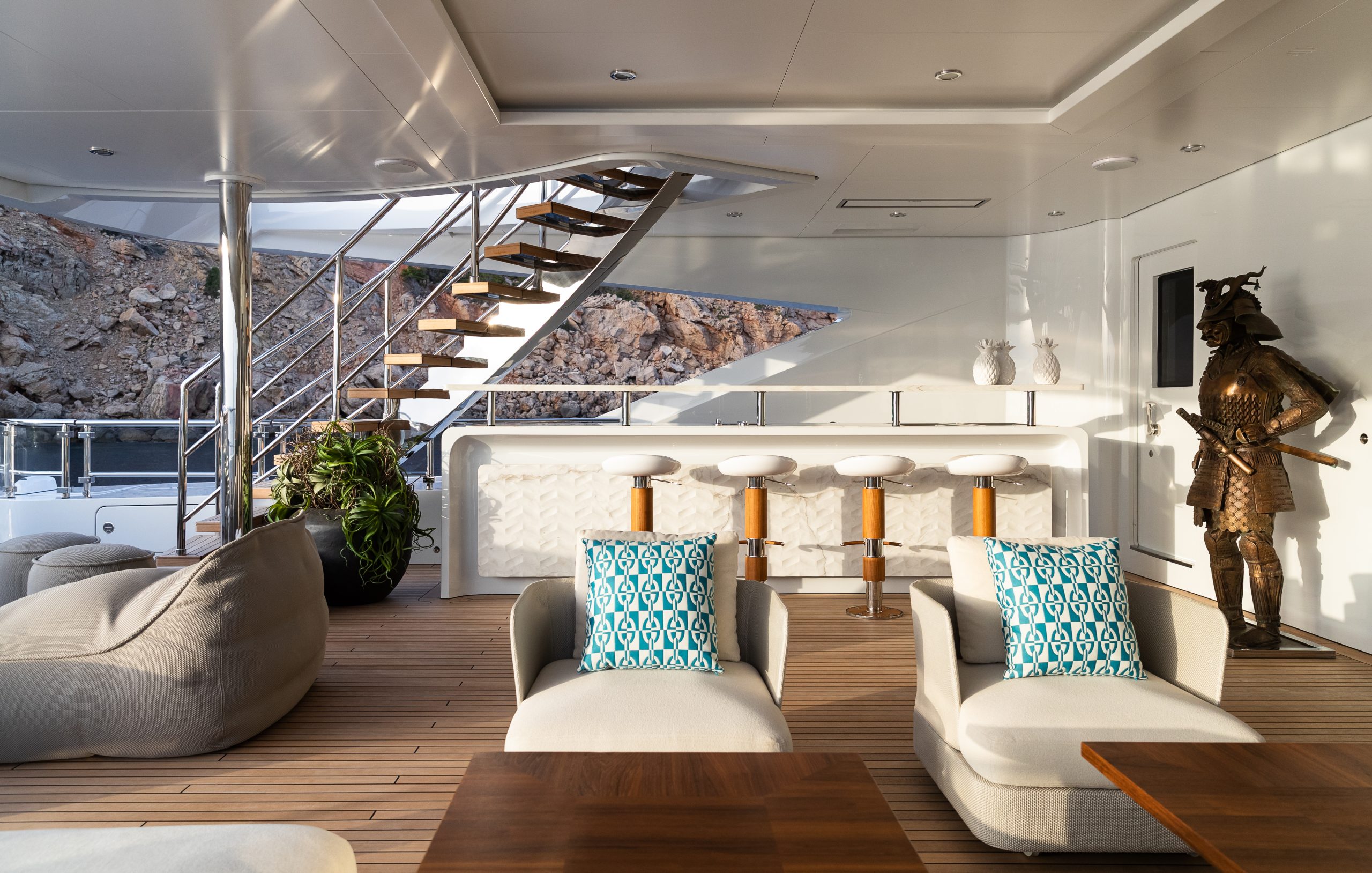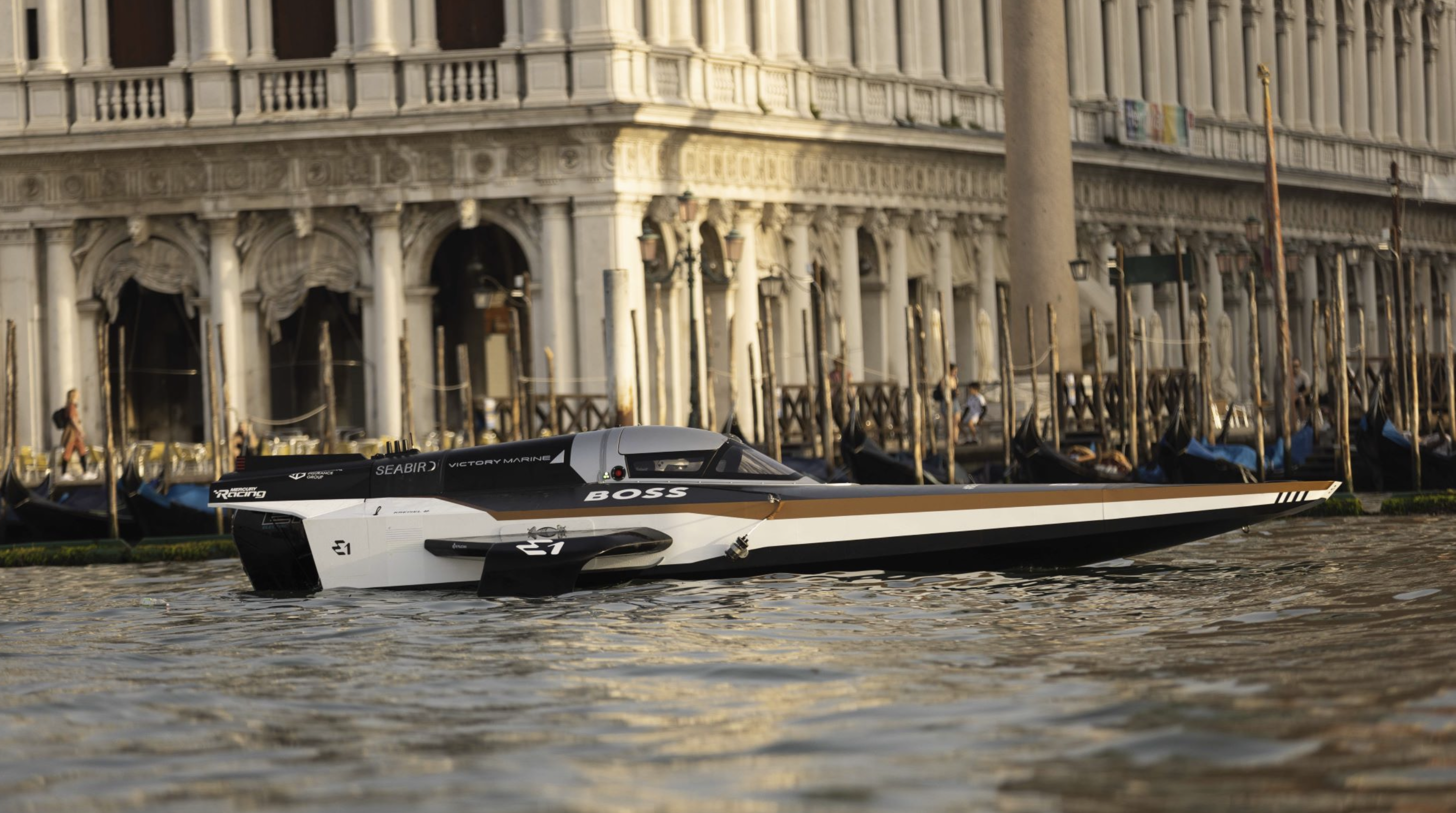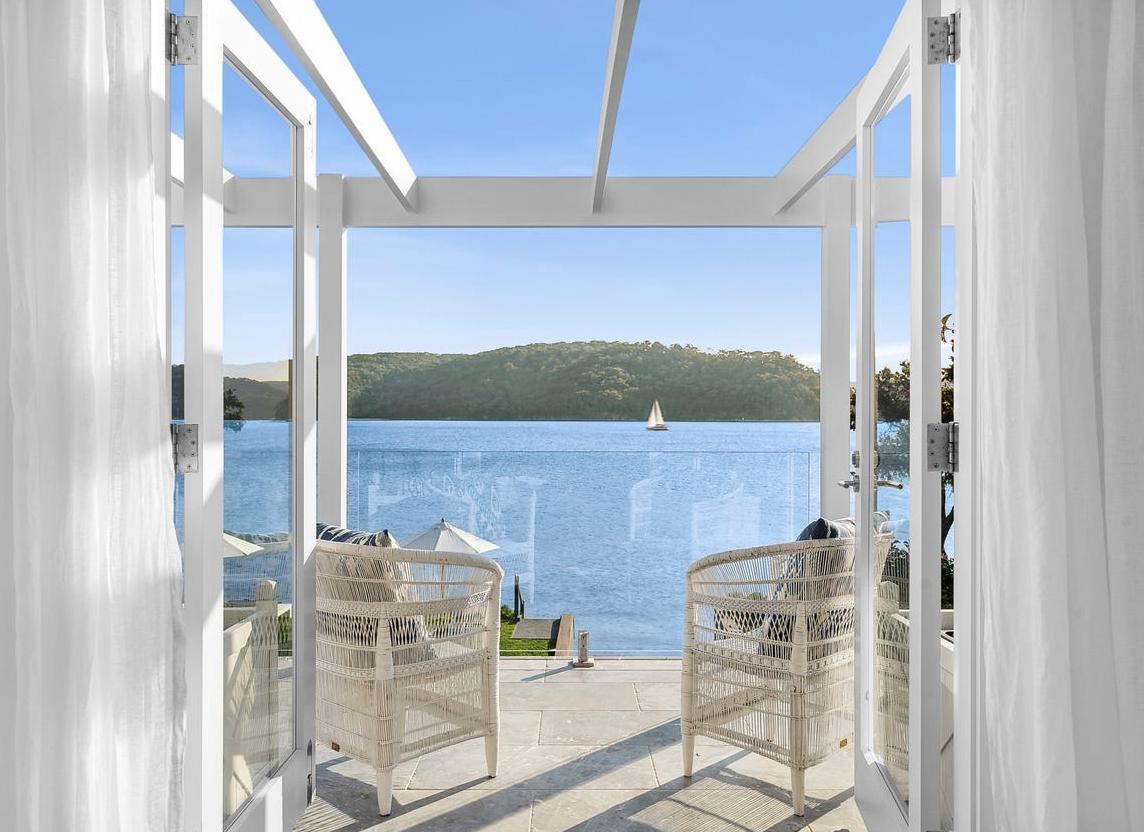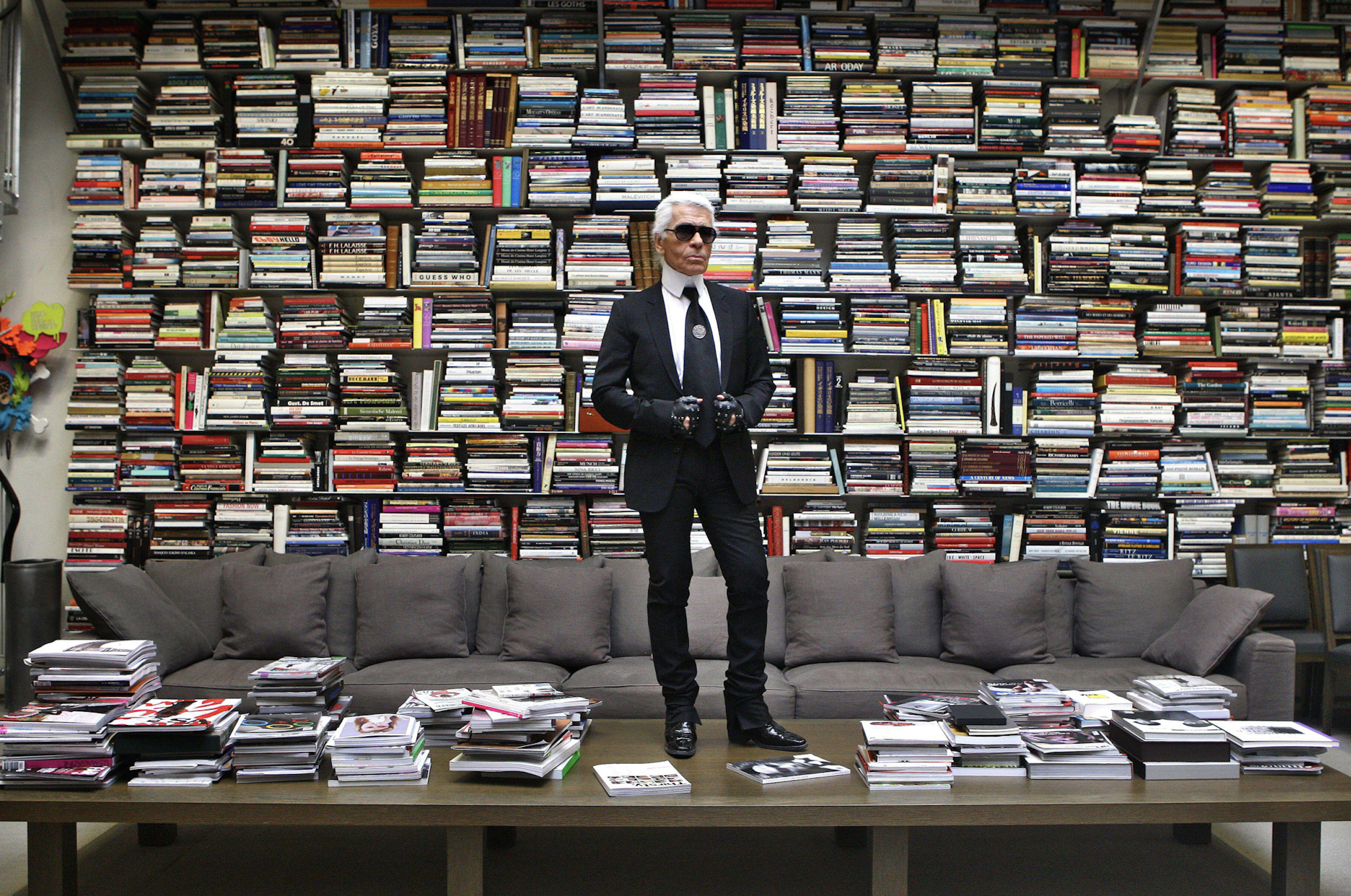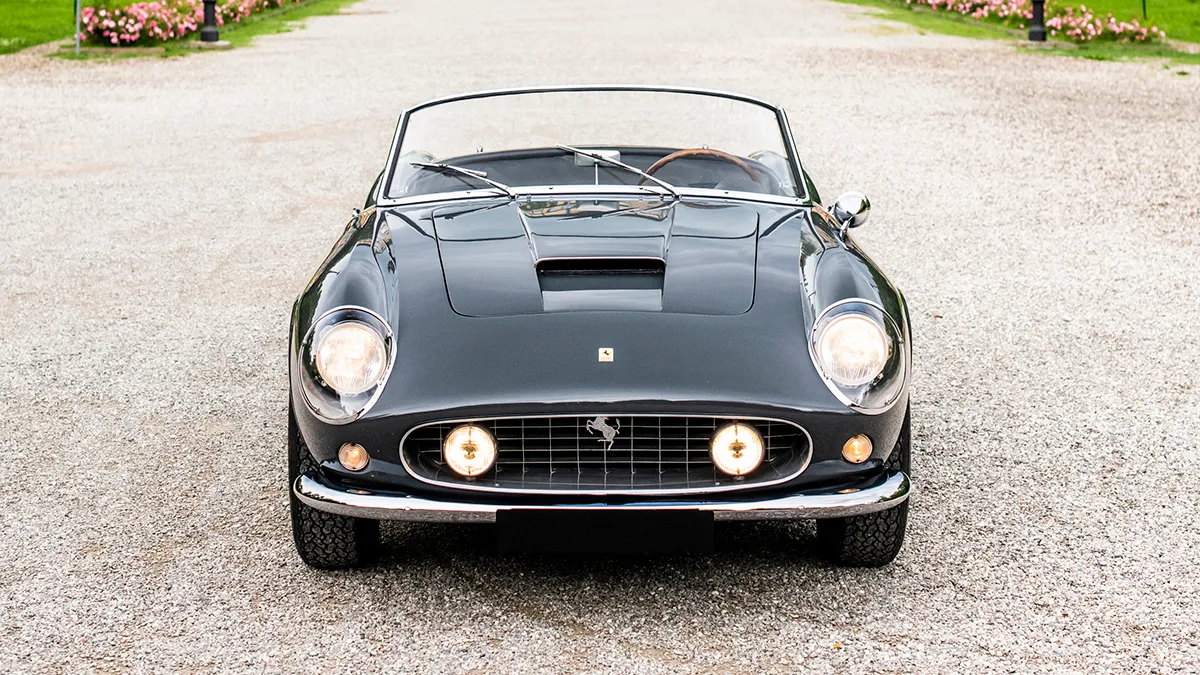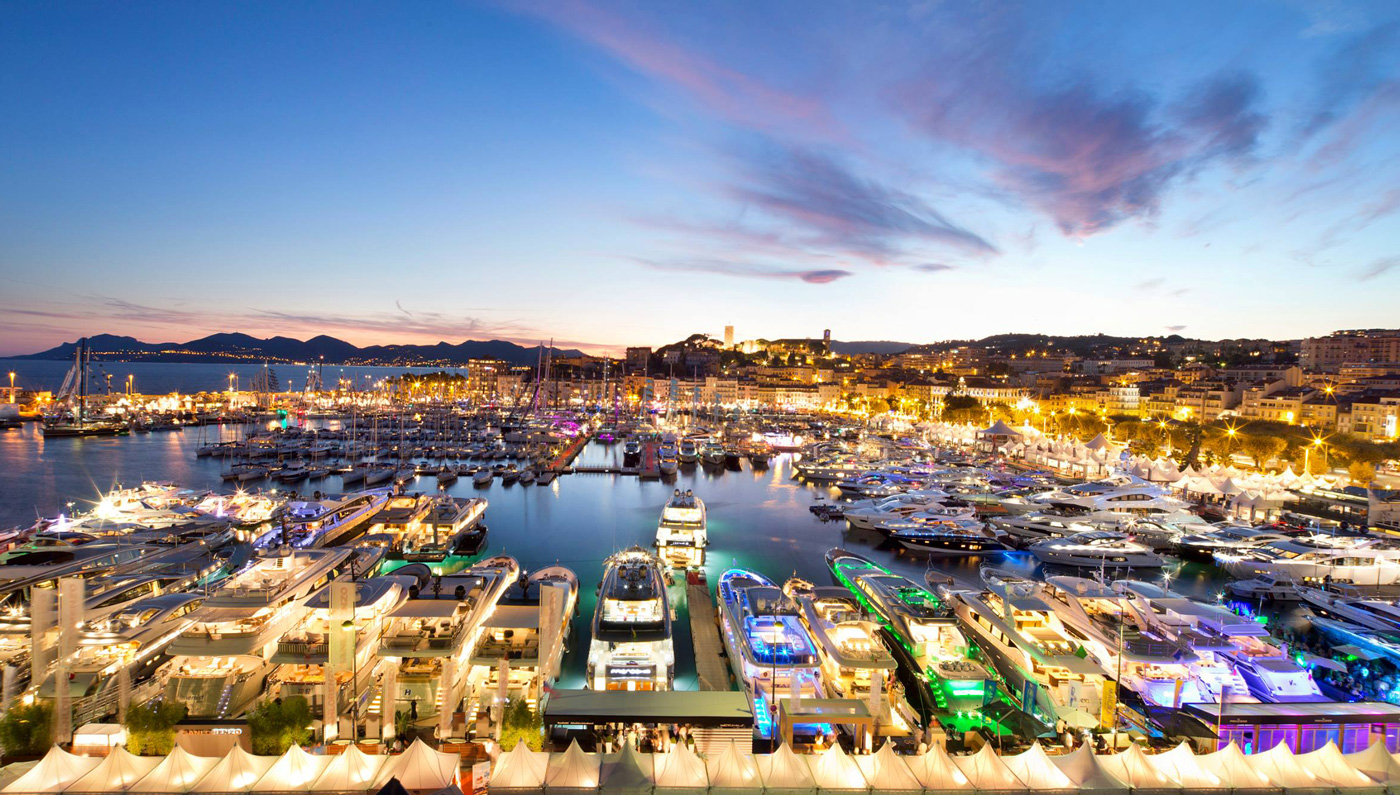
18 of the best new yachts from Cannes
We rounded up the Cannes Yachting Festival debuts to put at the top of your shopping list.
Related articles
Cannes is best known for its May film festival, but the Yachting Festival de Cannes (September 11-16) marked the official start of the boat-show season in Europe. Fifteen years ago, Cannes was just a regional event, but it has since become the must-attend for every major yacht builder in the world.
The largest yacht at Cannes, the 157-foot Baglietto 48m T-Line, seems small compared to the largest yachts at the Monaco Yacht Show (September 26 to 29). But the Cannes show’s 120 world premieres dwarves every other boat show on the globe.
This year’s event had nearly 600 boats in the water and on the docks at the Vieux Port and Port Canto (where brokerage yachts are displayed), along with water-toy and tender sections.
One of the primary attractions of the show is its location on the French Riviera. The beautiful, blue Mediterranean makes an exceptional backdrop (and a great place to sea-trial the yachts), while the French cafés, chic shops, and seafood restaurants are just steps from the show.
Here are some of the hottest new debuts this year.
#1 Princess Yachts R35

A collaboration between Ben Ainslie Racing Technologies and Pininfarina gave birth to the UK-based Princess Yachts R35 sport yacht, debuting in Cannes this year. America’s Cup technology channeled into the Princess Active Foil System means less drag for the R35, providing stellar stability, comfort, and manoeuvrability in all sea conditions. Italian car-design firm Pininfarina — known for its work on such marques as Ferrari, Maserati and Alfa Romeo — designed the lightweight carbon-fibre monocoque hull. Side air blades maximise engine airflow and mange stern turbulence, improving comfort all the while. Two aluminium V8 engines give the boat a 50-knot top-end speed — the fastest Princess ever. Posh interiors by Princess remind us that it’s a yacht.
#2 Cantieri Estensi 380 America

The 38-foot 380 America from Italian yard Cantieri Estensi is the first of the new line of America yachts — and it comes in several fun colours and multiple options. With design and engineering by Zuccheri Yacht Design, this timeless-looking, lobster-style, centre-console yacht has the option of two cabins down below, or just one large open-plan space. Plus, choose from a cockpit kitchen or a below-decks one. And then pick which engine: two 280hp or a pair 370hp Volvo Pentas. You can also decide to use it as a weekend cruiser, or pair it up with your superyacht to be used as a tender. So many decisions.
#3 Bladerunner 45 GT

Combining a performance hull with a luxury topside can be tricky, since most yacht builders can either do one or the other, but rarely both. Bladerunner’s new 45 GT, premiering at Cannes from Ice Marine in the UK, accomplishes both missions. The 45-footer reaches a top end of 50 knots, thanks to its stepped hull, designed to funnel air so it lifts the boat higher over the water, and triple 370hp D6 Volvo Penta engines. The GT designation, standing for Grand Tourer, kicks in above the waterline, with a big sunbed on the open stern, enclosed social area in the cockpit and a very generous cabin below. The Bladerunner has GT-like features rarely seen on any yacht, including electric side windows, suspension seats for rough-water running and a superyacht’s electronics package. Belowdecks, plenty of natural light fills the contemporary cabin, thanks to overhead glass panels and side windows. If 50 knots is just not enough, Ice Marine can up the speed to 70 knots (128 km/h) for “specialist” applications.
#4 Mazu 52

Known for quirky, unconventional but well-built day boats from 38 to 82 feet, Mazu’s new 52-footer will raise the bar in the luxury weekender category. Launched at Cannes, the 52 shares the high bow and protected cockpit of its siblings, along with big sunbeds, tables and lounges in the cockpit and an open transom. But the two-cabin interior is a departure for Mazu. The new design offers not only superior protection in big seas (thanks to the closed-in bow), but also a much more comfortable overnight experience. Mazu dressed the interior in soft Foglizzo leathers, with classy Bianca marble veneers laid over a lightweight aluminium substrate. The hull layup includes a high percentage of carbon-fibre in the sandwich construction, with a full carbon-hard hardtop. Mazu is more conscious than most builders in keeping its boats as light as possible, without compromising strength. The 52 will be powered by twin Volvo IPS 800 engines that deliver a top speed of 36 knots, with a cruise of 32 knots.
#5 Bluegame 62

Just the name Bluegame sums up the fun mission of this new launch. The much larger sibling of the Bluegame 42 has a walk-around design that squeezes every centimetre of usable space out of the topsides. That includes that sun cushion on the hardtop, an area that is never used for people. The designers included plenty of other room to roam around the cockpit, including a large sunbed on the foredeck and an even larger sunbed in the center cockpit, with yet more sunbeds and lounges facing the stern of the yacht. The wide-open transom puts you about 30 centimetres above open water. The aft platform of the stern is designed for carrying a tender and lowers into the water for easy launch and retrieval. Though this 62 screams day-boat, the interior includes a full-beam master suite, forward cabin, and saloon with a large couch that seats eight, opposite the galley. One of the more exciting categories as this year’s Cannes show will be luxury day-boats, and while this yacht suits that category, anyone interested in this handsome boat will soon find out that they won’t be shortchanged belowdecks, either.
#6 Ferretti Yachts 670

The Ferretti Yachts 670 flybridge yacht sports exterior design by Filippo Salvetti — his first for the brand — and the Ferretti Group, and an interior also designed by the Ferretti Group. The 67-foot yacht sports a 25-square-metre flybridge with loungers, bar, dining table and settee, and a foredeck fitted with lounging space. An open-plan main deck provides a spacious feel, as do the numerous windows. Belowdecks guests will find an amidships full-beam master suite, a full-beam VIP stateroom forward, and a twin cabin. An optional version comes with a single captain’s cabin. Ferretti offers two engine choices: either a pair of 1,000hp or 1,200hp MAN diesel engines, which propel the 670 to either 28 or 32 knots. The yacht’s cruise speed is 25.
#7 Sunseeker Sport Yacht 74

The new 74 Sport Yacht from British boatbuilder Sunseeker has its world premiere in Cannes. Borrowing design and performance features from the Sunseeker Predator 74, the 74 Sport Yacht offers up a huge flybridge, with helm station, seating, dining and sunbathing spaces. A bimini shade and wet bar are optional. A large sun pad and U-shaped dining area forward of the helm on the foredeck provide an excellent location for a sunset cocktail or a meal with an amazing view.
The 74 Sport Yacht transforms into an open yacht when the weather is nice or a closed yacht when it’s not, thanks to a cockpit door that lowers itself into the sole of the yacht — kind-of like a convertible.
Oversized windows and a helm sunroof provide the main-deck areas with all kinds of natural light. Seating and dining areas have unobstructed 360-degree views. A galley and three en-suite cabins are belowdecks: The master stateroom sits aft, a VIP stateroom is forward, and a twin cabin is starboard. A crew cabin is situated next to the garage.
This 74-foot yacht sports a 38-knot max speed, a cruising speed of 28, and a range of 330 nautical miles. The tender garage stows an optional Williams 395 SportJet.
#8 CCN Freedom

CCN’s Freedom, owned by fashion designer Roberto Cavalli, makes its world premiere in Cannes. The fully custom 88-foot yacht, which is part of CCN’s Fuoriserie line, was designed by Cavalli along with his friend and designer Tommaso Spadolini. The yacht’s strong exterior lines and bold interior reflect Cavalli’s personality. He aimed for maximum privacy while still allowing for close proximity to the water. This can be seen in several locations. Situated aft of the helm station, Cavalli’s master suite takes over the whole main deck, while a skylight bathes the space in natural light. In addition, the aft cockpit sports privacy curtains so he can relax on deck without being seen. Up top on the flydeck is another private area with a helm station. Two guest staterooms and crew quarters are housed down below. A tender is stored on the foredeck. With both an aluminium hull and superstructure, as well as three waterjet engines, Freedom boasts a top speed of 40 knots.
#9 Numarine 26XP

Making its global debut at Cannes, Numarine’s 26XP represents the new breed of mini-expedition yachts. Along with its sister the 32XP (making its European debut at Cannes), the 85-foot 26XP has a highly efficient hull, high freeboard and intrepid profile, and a special flybridge that covers about two-thirds of the hull’s length. The bridge has 100 square metres of usable deck space, allowing owners and guests to find their own private areas with space left over on the aft deck for a tender.
The yacht has a generous, full-beam saloon on the main deck, with full-height windows, a dining area, and settees for congregating. Designer Cal Yalman also left abundant space belowdecks for the four staterooms, including the full-beam master suite amidships, where the yacht is widest. A VIP and two twins comprise the other three. Numarine worked with Silent Line to make the yacht as noise- and vibration-free as possible, using techniques that are more often applied to superyachts. The yacht comes in a displacement-hull version, which has a maximum speed of 13.5 knots. At eight knots, its range is 3000 nautical miles. The semiplaning version has larger engines and pushes the 85-footer to an impressive 28 knots.
#10 Dominator Ilumen Cadet V

Austrian-owned, Italy-based shipyard Dominator presents its fifth Ilumen 28m superyacht, the series that made news last year with its first hull, Kalliente. The 92-foot semi-custom Cadet V sports an efficient semi-displacement hull and a shaft propulsion system, with further technological and interior tweaks taken from suggestions by those familiar with the first few hulls. Yacht designer Alberto Mancini created the exterior, and Dominator chief designer Luca Catino crafted the interior. Cadet V’s owner is a fan of artist Stefano Curto, whose work incorporates thousands of colourful Swarovski crystals. Several of his pieces are featured on the yacht.
Floor-to-ceiling windows on the main deck are great for the mesmerizing Curto work hanging in the main saloon — and not bad for views and natural light either. The yacht sleeps eight guests in four staterooms, including an owner’s suite that this owner extended for space. In addition to the owner’s suite, Cadet V offers up three staterooms — a full-beam master and two VIPs — on the lower deck. Crew quarters accommodate three crew members.
The yacht carries a Williams Jet Tenders SportJet 395 and a Radinn Wakejet, plus toys, in its tender garage, and its beach club provides easy access to the water. Cadet V boasts a maximum speed of 21 knots and a cruise speed of 14.
#11 Benetti Delfino 95

Benetti has been building boats since 1873, but there is nothing traditional about the new Delfino 95, named Christella III. The superstructure, all curves and wave patterns, is arguably the most contemporary semicustom design the Italian builder has launched for many years. But the yacht’s function extends far beyond its form. Benetti has turned the traditional foredeck into an outdoor sun platform, with a large sunbed forward and a set of lounges on the next level up. The section is actually on the same level as the rear flybridge deck, so owners and guests can simply walk around the sides, instead of going through the interior and climbing stairs to reach the different areas. The 95 also has a private nook above the hardtop, where the captain can drive or guests can huddle in a small group for the best view on the water. The interior design by Achille Salvagni, the Rome architect who made his name in contemporary homes, is curved, fluid and as unorthodox (but beautiful) as the exterior. A forward, full-beam master suite on the main deck provides plenty of space for Christella III’s owners, while the dining area and saloon in the rear are comfortable but elegant gathering areas. On the deck below are four staterooms for eight guests. The Delfino 95 can also accommodate five crew in three cabins. This newest Benetti is a nice departure for the storied brand: not too far out there, but wild enough to set it apart from the rest of the 100-foot pack.
#12 Azimut Grande 32 Metri

The Azimut Grande 32 Metri, which premiered at Cannes, has a muscular-looking exterior from Stefano Righini, but the Achille Salvagni interior is all curves and light. Salvagni, known for whimsical but elegant rooms, designed the 105-foot Azimut yacht with custom table lamps and overhead fixtures as well as bespoke furniture. The master suite has full-height windows that bathe the sleeping area in natural light. Righini designed excellent usable space across the exterior, with a large beach club at the stern and a flybridge divided into a dining area, central social area, and relaxation area in the bow (with a mini-Jacuzzi). Twin 2200hp MTU engines give the boat a top speed of 26.5 knots.
#13 Arcadia 105

From its start in 2005, Arcadia set out to be a different kind of yacht builder. Some of its defining characteristics: eco-conscious without compromising comfort and luxury, large interiors with lots of thermally insulated glass, hybrid propulsion, convertible exterior spaces and solar panels integrated into the hull. The Italian builder was so far ahead of its time that it now has many imitators.
Its new 105, which will make its world debut at Cannes, ticks all the builder’s boxes in a supersized way. Its upper deck has a skylounge that opens into the aft sun lounge, creating 56 square metres of relaxation area. A dining table seats up to 10 on the rear of this deck, but seating space can double by using the forward area. The owner of the first 105, his third Arcadia in seven years, also mandated custom features like a master suite with its own set of stairs for privacy, a winter garden at the front of the boat that doubles as a children’s play area, and three other staterooms that include two VIPs and a double. The builder offers 50 choices of interior layout, so the new eco-superyacht can be configured to just about any taste.
#14 Conrad C133

Arguably the hottest studio in superyacht design, UK-based Reymond Langton was behind the contemporary but elegant look of the new Viatoris, the 133-footer from Conrad shipyard. The designers did away with the usual stacked wedding-cake look, and instead introduced curves to the rear of the upper decks that lend an air of individuality to its blue-and-white profile, while also providing an exceptional view for the owners and guests. Besides the unusually ornate interior, the 133 differs from other yachts in its class with the four balconies that open outward on the main deck (two on in the master suite and two in the aft saloon) that give an open-air feel to these areas. The owner uses Viatoris as a home on the water, rather than a weekend retreat, which explains the full-beam master suite, generous social spaces on the bridge and sundecks, and custom interior.
#15 Chaser 500R

Nobody can beat the Italians at fast, luxury rigid-hulled inflatables, except maybe a Dutch company called Chaser Yachts. Powered by triple 400hp Mercury outboards, its new 500R promises to be a very fast boat, with a top speed that passes 55 knots. Chaser designed the 50-footer as a tender for a superyacht, but it would make an outstanding weekend boat with its two cabins, protected cockpit, and open transom. Yacht designer Guido de Groot did a masterful job with the exterior design, making it look sleek and safe, while the aluminium construction of the hull and rubber inflatable tubes promises seaworthiness and longevity. The 500R at Cannes will be hull number one, but Chaser says it can customise any part of the boat for each owner’s tastes.
#16 Sanlorenzo SL102

Italian builder Sanlorenzo has made its name with clever designs on stylish-looking yachts. The new SL102 launched in Cannes does not disappoint: instead of having two decks that run on both sides of the interior, the designers decided to use only the starboard deck, which freed up about 10.2 square metres for the interior. That makes a noticeable difference in the yacht’s livability, especially since it made the yacht wider rather than longer. The saloon, which seems more like a waterside villa, also has a fold-down balcony that makes the interior area feel even larger. The SL102 is built on a planing hull, so it’s much faster than the majority of displacement 100-footers on the water. With its twin 2216hp MTU diesels, it reaches a top end of 28 knots.
#17 Cantiere delle Marche Nauta Air 110.19

Known for its strong, but lightweight hulls, the 110-foot Nauta Air 110.19 from Cantiere delle Marche was among the line-up in Cannes. Featuring naval and interior architecture by CdM and Nauta Design, the Nauta Air line of yachts is designed to keep an equilibrium between indoor and outdoor spaces, accomplished in part by large windows. The 110.19 houses 12 guests in five staterooms — with the help of two pullman beds — as well as seven crewmembers in four cabins. The yacht’s two Caterpillar C18 engines propel the Nauta Air to a maximum speed of 13 knots with a range of 5000 nm if cruising at 10. Zero Speed stabilizers keep the ride a smooth one.
#18 Custom Line 120

Making its world debut at this year’s Cannes Yachting Festival, the Custom Line 120 takes aspects of automotive, aeronautical, and residential design, as well as that of racing power yachts, to create a sporty planing superyacht, the first penned by Francesco Paszkowski Design.
A highlight of the Custom Line 120 is the glass door between the aft cockpit and the main saloon. It rests at a 45-degree angle and, to open, it tilts up into the ceiling, as well as opening horizontally. This makes for a true indoor/outdoor living space. Francesco Paszkowski and the Ferretti Group designers created the interior decor. Besides the main-deck master suite, four en-suite staterooms reside belowdecks: two VIPs and two singles. Crew quarters are forward and include four cabins.
The flybridge offers up a hot tub and lounging space as well as stairs that lead to the forepeak dining and lounging area. Two garages are located at water level — one at the stern and one forward. All told, the 120 can carry two tenders and a three-person jet ski.
The new hull design reduces resistance and, with its pair of MTU 16V 2000 M96L engines, hits a top speed of 25 knots. Its cruise speed is 21, but in the 120’s “economical cruising speed” of 11 knots, the yacht has a range up to 1100 nm.
Subscribe to the Newsletter
Recommended for you
Will Smith, Tom Brady And More Celebs Are Team Owners in a New Electric-Boat League
Will all that star power deliver?
May 16, 2024
You may also like.
By Josh Bozin
24/07/2024
You may also like.
5 Lounge Chairs That Add Chic Seating to Your Space
Daybeds, the most relaxed of seating solutions, offer a surprising amount of utility.
Chaise longue, daybed, recamier, duchesse brisée—elongated furniture designed for relaxing has a roster of fancy names. While the French royal court of Louis XIV brought such pieces to prominence in fashionable European homes, the general idea has been around far longer: The Egyptian pharaohs were big fans, while daybeds from China’s Ming dynasty spurred all those Hollywood Regency fretwork pieces that still populate Palm Beach living rooms. Even Mies van der Rohe, one of design’s modernist icons, got into the lounge game with his Barcelona couch, a study of line and form that holds up today.
But don’t get caught up in who invented them, or what to call them. Instead, consider their versatility: Backless models are ideal in front of large expanses of glass (imagine lazing on one with an ocean view) or at the foot of a bed, while more structured pieces can transform any corner into a cozy reading nook. Daybeds may be inextricably linked to relaxation, but from a design perspective, they put in serious work.

Emmy, Egg Collective
In designing the Emmy chaise, the Egg Collective trio of Stephanie Beamer, Crystal Ellis and Hillary Petrie, who met as students at Washington University in St. Louis, aimed for versatility. Indeed, the tailored chaise looks equally at home in a glass skyscraper as it does in a turn-of-the-century town house. Combining the elegance of a smooth, solid oak or walnut frame with the comfort of bolsters and cushioned upholstery or leather, it works just as well against a wall or at the heart of a room. From around $7,015; Eggcollective.com
 Plum, Michael Robbins
Plum, Michael Robbins
Woodworker Michael Robbins is the quintessential artisan from New York State’s Hudson Valley in that both his materials and methods pay homage to the area. In fact, he describes his style as “honest, playful, elegant and reflective of the aesthetic of the Hudson Valley surroundings”. Robbins crafts his furniture by hand but allows the wood he uses to help guide the look of a piece. (The studio offers eight standard finishes.) The Plum daybed, brought to life at Robbins’s workshop, exhibits his signature modern rusticity injected with a hint of whimsy thanks to the simplicity of its geometric forms. Around $4,275; MichaelRobbins.com

Kimani, Reda Amalou Design
French architect and designer Reda Amalou acknowledges the challenge of creating standout seating given the number of iconic 20th-century examples already in existence. Still, he persists—and prevails. The Kimani, a bent slash of a daybed in a limited edition of eight pieces, makes a forceful statement. Its leather cushion features a rolled headrest and rhythmic channel stitching reminiscent of that found on the seats of ’70s cars; visually, these elements anchor the slender silhouette atop a patinated bronze base with a sure-handed single line. The result: a seamless contour for the body. Around $33,530; RedaAmalou
Dune, Workshop/APD
From a firm known for crafting subtle but luxurious architecture and interiors, Workshop/APD’s debut furniture collection is on point. Among its offerings is the leather-wrapped Dune daybed. With classical and Art Deco influences, its cylindrical bolsters are a tactile celebration, and the peek of the curved satin-brass base makes for a sensual surprise. Associate principal Andrew Kline notes that the daybed adeptly bridges two seating areas in a roomy living space or can sit, bench-style, at the foot of a bed. From $13,040; Workshop/ APD
Sherazade, Edra
Designed by Francesco Binfaré, this sculptural, minimalist daybed—inspired by the rugs used by Eastern civilizations—allows for complete relaxation. Strength combined with comfort is the name of the game here. The Sherazade’s structure is made from light but sturdy honeycomb wood, while next-gen Gellyfoam and synthetic wadding aid repose. True to Edra’s amorphous design codes, it can switch configurations depending on the user’s mood or needs; for example, the accompanying extra pillows—one rectangular and one cylinder shaped— interchange to become armrests or backrests. From $32,900; Edra
You may also like.
By Josh Bozin
24/07/2024
22/07/2024
Watches & Wonders 2024 Showcase: Hermès
We head to Geneva for the Watches & Wonders exhibition; a week-long horological blockbuster featuring the hottest new drops, and no shortage of hype.
With Watches & Wonders 2024 well and truly behind us, we review some of the novelties Hermès presented at this year’s event.
—
HERMÈS

Moving away from the block colours and sporty aesthetic that has defined Hermès watches in recent years, the biggest news from the French luxury goods company at Watches & Wonders came with the unveiling of its newest collection, the Hermès Cut.
It flaunts a round bezel, but the case middle is nearer to a tonneau shape—a relatively simple design that, despite attracting flak from some watch aficionados, works. While marketed as a “women’s watch”, the Cut has universal appeal thanks to its elegant package and proportions. It moves away from the Maison’s penchant for a style-first product; it’s a watch that tells the time, not a fashion accessory with the ability to tell the time.
Hermès gets the proportions just right thanks to a satin-brushed and polished 36 mm case, PVD-treated Arabic numerals, and clean-cut edges that further accentuate its character. One of the key design elements is the positioning of the crown, boldly sitting at half-past one and embellished with a lacquered or engraved “H”, clearly stamping its originality. The watch is powered by a Hermès Manufacture movement H1912, revealed through its sapphire crystal caseback. In addition to its seamlessly integrated and easy-wearing metal bracelet, the Cut also comes with the option for a range of coloured rubber straps. Together with its clever interchangeable system, it’s a cinch to swap out its look.
It will be interesting to see how the Hermès Cut fares in coming months, particularly as it tries to establish its own identity separate from the more aggressive, but widely popular, Ho8 collection. Either way, the company is now a serious part of the dialogue around the concept of time.
—
Read more about this year’s Watches & Wonders exhibition at robbreport.com.au
You may also like.
22/07/2024
Living La Vida Lagerfeld
The world remembers him for fashion. But as a new tome reveals, the iconoclastic designer is defined as much by extravagant, often fantastical, homes as he is clothes.
“Lives, like novels, are made up of chapters”, the world-renowned bibliophile, Karl Lagerfeld, once observed.
Were a psychological-style novel ever to be written about Karl Lagerfeld’s life, it would no doubt give less narrative weight to the story of his reinvigoration of staid fashion houses like Chloe, Fendi and Chanel than to the underpinning leitmotif of the designer’s constant reinvention of himself.
In a lifetime spanning two centuries, Lagerfeld made and dropped an ever-changing parade of close friends, muses, collaborators and ambiguous lovers, as easily as he changed his clothes, his furniture… even his body. Each chapter of this book would be set against the backdrop of one of his series of apartments, houses and villas, whose often wildly divergent but always ultra-luxurious décor reflected the ever-evolving personas of this compulsively public but ultimately enigmatic man.
With the publication of Karl Lagerfeld: A Life in Houses these wildly disparate but always exquisite interiors are presented for the first time together as a chronological body of work. The book indeed serves as a kind of visual novel, documenting the domestic dreamscapes in which the iconic designer played out his many lives, while also making a strong case that Lagerfeld’s impact on contemporary interior design is just as important, if not more so, than his influence on fashion.
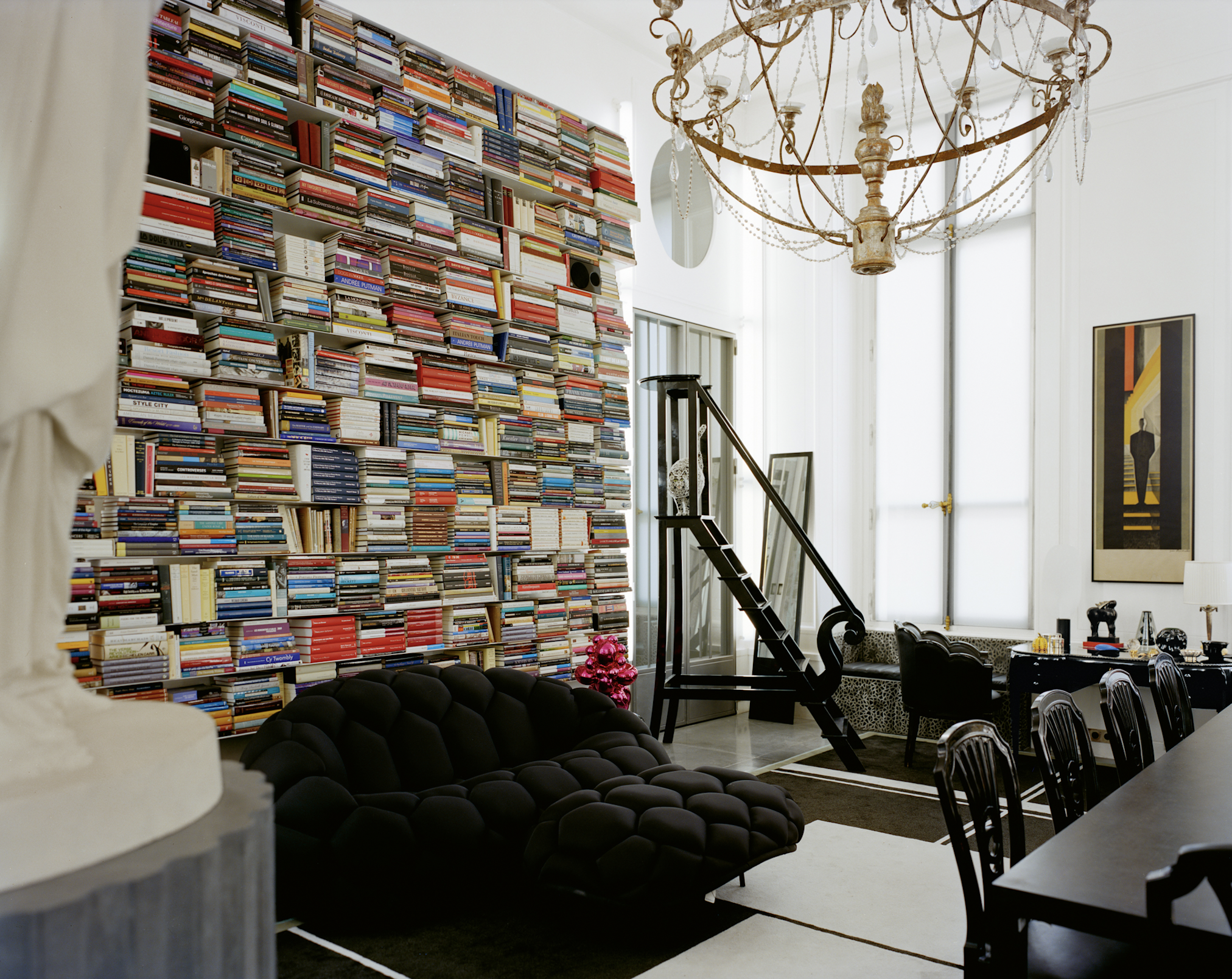
In fact, when the first Lagerfeld interior was featured in a 1968 spread for L’OEil magazine, the editorial describes him merely as a “stylist”. The photographs of the apartment in an 18th-century mansion on rue de Université, show walls lined with plum-coloured rice paper, or lacquered deepest chocolate brown in sharp contrast to crisp, white low ceilings that accentuated the horizontality that was fashionable among the extremely fashionable at the time. Yet amid this setting of aggressively au courant modernism, the anachronistic pops of Art Nouveau and Art Deco objects foreshadow the young Karl’s innate gift for creating strikingly original environments whose harmony is achieved through the deft interplay of contrasting styles and contexts.
Lagerfeld learned early on that presenting himself in a succession of gem-like domestic settings was good for crafting his image. But Lagerfeld’s houses not only provided him with publicity, they also gave him an excuse to indulge in his greatest passion. Shopping!
By 1973, Lagerfeld was living in a new apartment at Place Saint–Sulpice where his acquisition of important Art Deco treasures continued unabated. Now a bearded and muscular disco dandy, he could most often be found in the louche company of the models, starlets and assorted hedonistic beauties that gathered around the flamboyant fashion illustrator Antonio Lopez. Lagerfeld was also in the throes of a hopeless love affair with Jacques de Bascher whose favours he reluctantly shared with his nemesis Yves Saint Laurent.
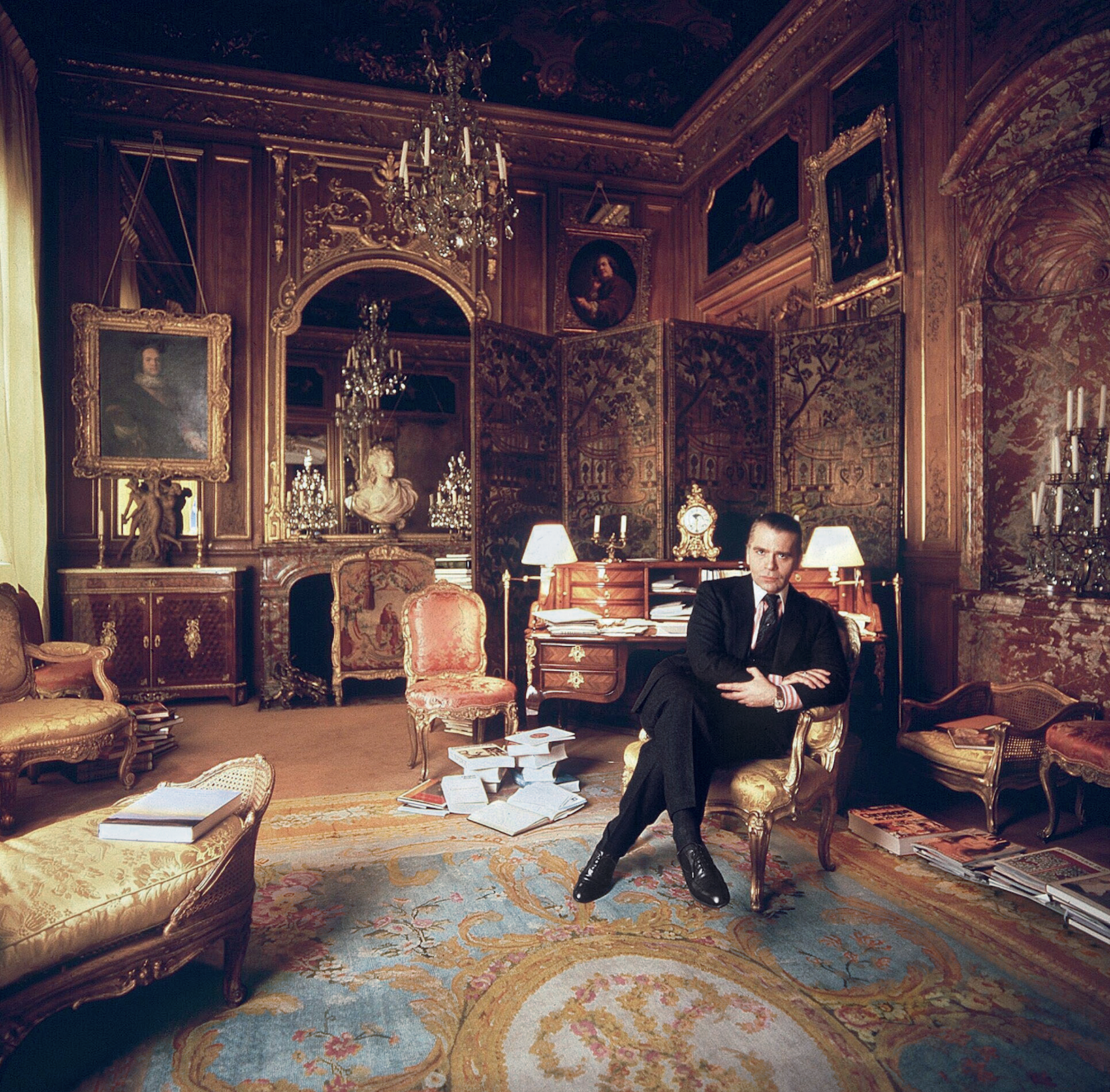
He painted the rooms milky white and lined them with specially commissioned carpets—the tawny patterned striations of which invoked musky wild animal pelts. These lent a stark relief to the sleek, machine-age chrome lines of his Deco furnishings. To contemporary eyes it remains a strikingly original arrangement that subtly conveys the tensions at play in Lagerfeld’s own life: the cocaine fuelled orgies of his lover and friends, hosted in the pristine home of a man who claimed that “a bed is for one person”.
In 1975, a painful falling out with his beloved Jacques, who was descending into the abyss of addiction, saw almost his entire collection of peerless Art Deco furniture, paintings and objects put under the auctioneer’s hammer. This was the first of many auction sales, as he habitually shed the contents of his houses along with whatever incarnation of himself had lived there. Lagerfeld was dispassionate about parting with these precious goods. “It’s collecting that’s fun, not owning,” he said. And the reality for a collector on such a Renaissance scale, is that to continue buying, Lagerfeld had to sell.
Of all his residences, it was the 1977 purchase of Hôtel Pozzo di Borgo, a grand and beautifully preserved 18th-century house, that would finally allow him to fulfill his childhood fantasies of life in the court of Madame de Pompadour. And it was in this aura of Rococó splendour that the fashion designer began to affect, along with his tailored three-piece suits, a courtier’s ponytailed and powdered coif and a coquettish antique fan: marking the beginning of his transformation into a living, breathing global brand that even those with little interest in fashion would immediately recognise.
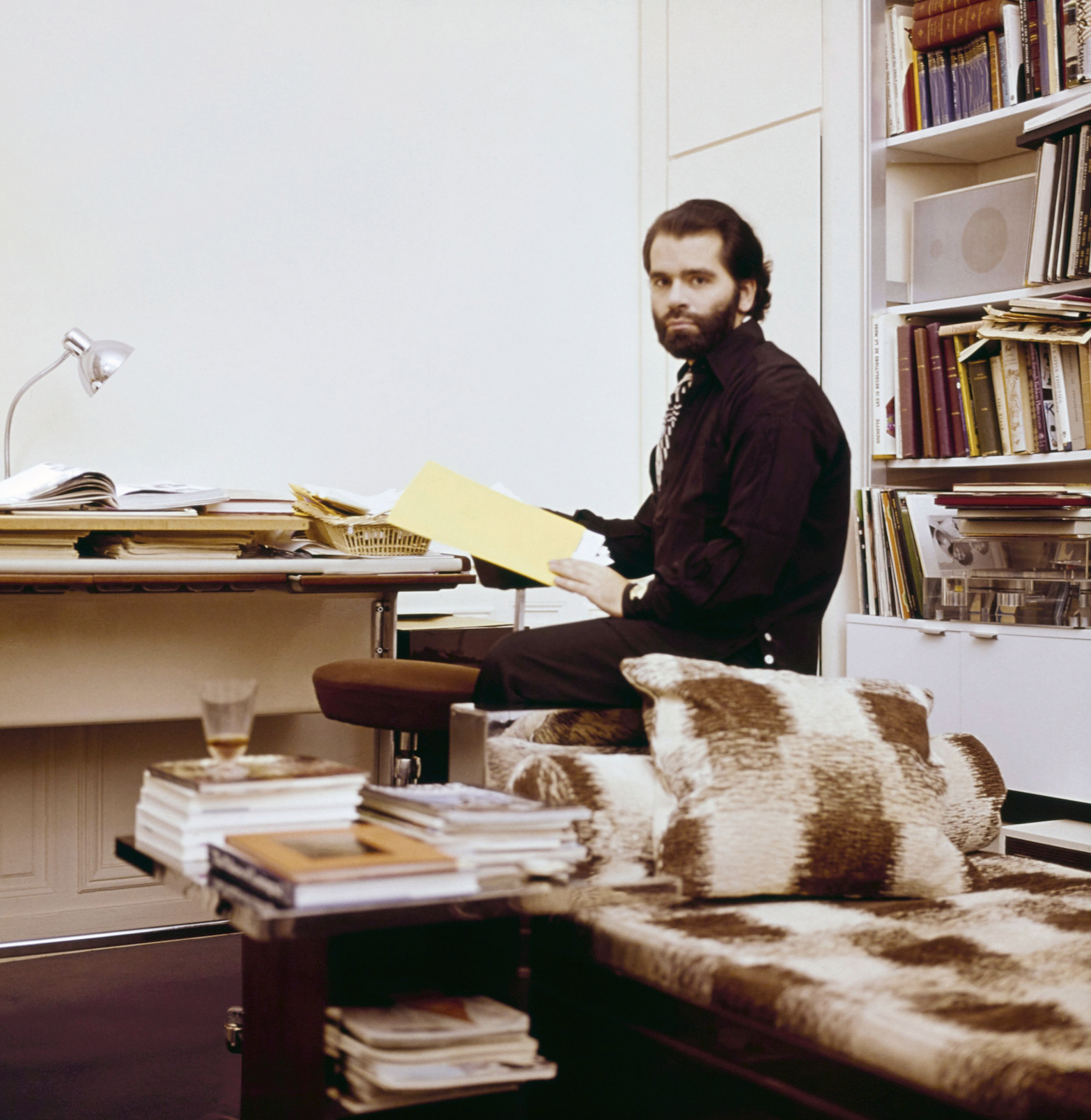
Lagerfeld’s increasing fame and financial success allowed him to indulge in an unprecedented spending frenzy, competing with deep-pocketed institutions like the Louvre to acquire the finest, most pedigreed pearls of the era—voluptuously carved and gilded bergères; ormolu chests; and fleshy, pastel-tinged Fragonard idylls—to adorn his urban palace. His one-time friend André Leon Talley described him in a contemporary article as suffering from “Versailles complex”.
However, in mid-1981, and in response to the election of left-wing president, François Mitterrand, Lagerfeld, with the assistance of his close friend Princess Caroline, became a resident of the tax haven of Monaco. He purchased two apartments on the 21st floor of Le Roccabella, a luxury residential block designed by Gio Ponti. One, in which he kept Jacques de Bascher, with whom he was now reconciled, was decorated in the strict, monochromatic Viennese Secessionist style that had long underpinned his aesthetic vocabulary; the other space, though, was something else entirely, cementing his notoriety as an iconoclastic tastemaker.
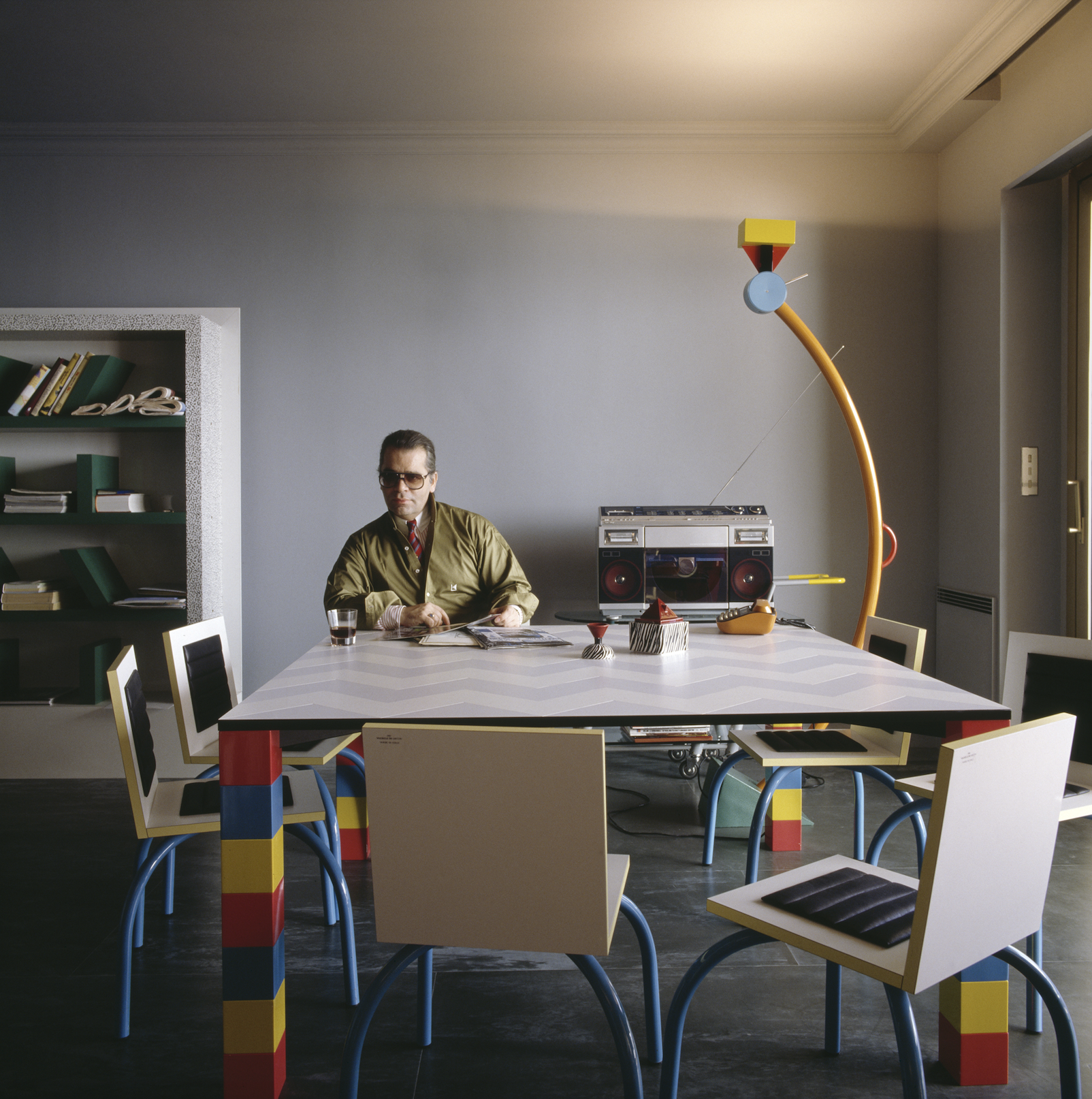
Lagerfeld had recently discovered the radically quirky designs of the Memphis Group led by Ettore Sottsass, and bought the collective’s entire first collection and had it shipped to Monaco. In a space with no right angles, these chaotically colourful, geometrically askew pieces—centred on Masanori Umeda’s famous boxing ring—gave visitors the disorientating sensation of having entered a corporeal comic strip. By 1991, the novelty of this jarring postmodern playhouse had inevitably worn thin and once again he sent it all to auction, later telling a journalist that “after a few years it was like living in an old Courrèges. Ha!”
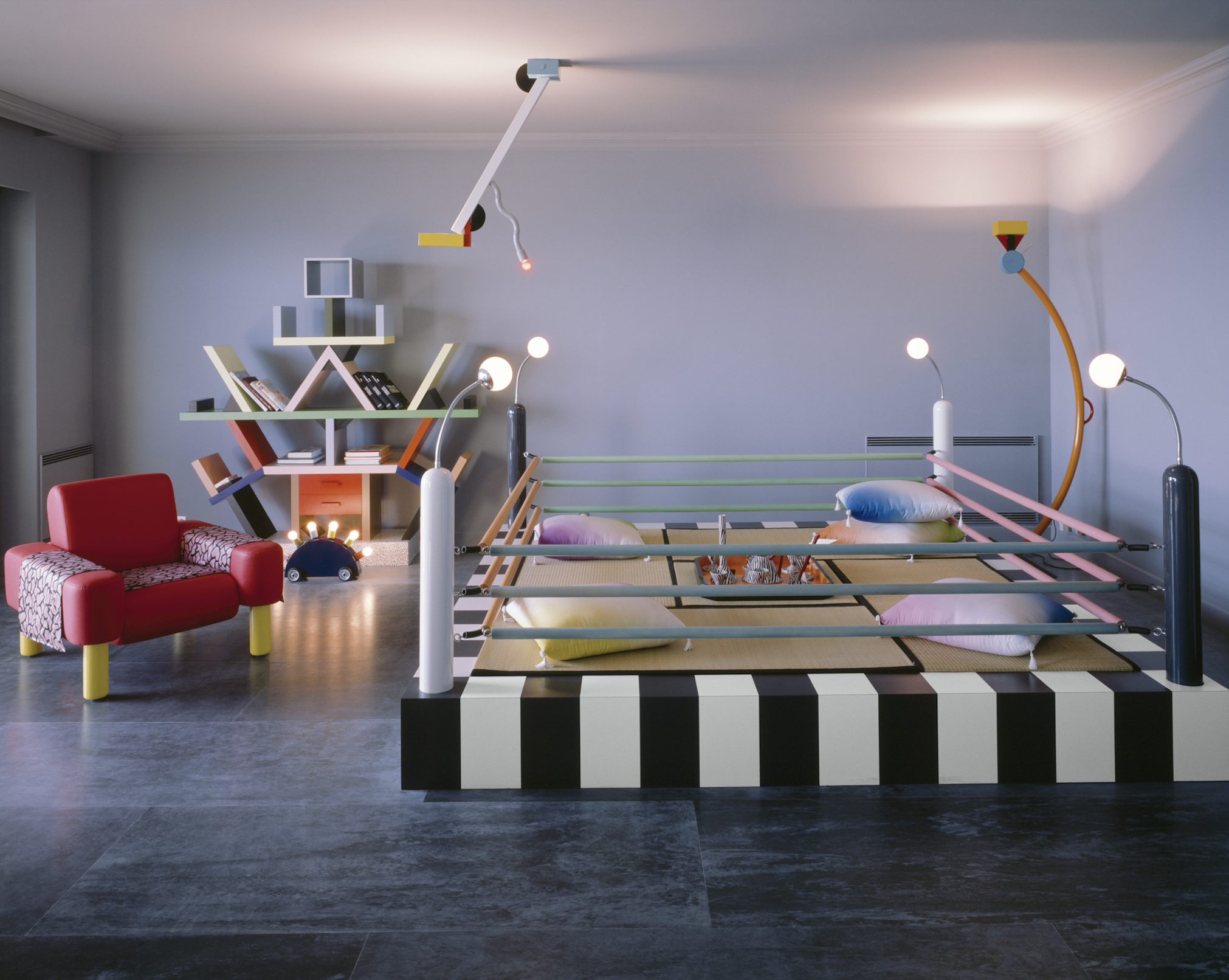
In 1989, de Bascher died of an AIDS-related illness, and while Lagerfeld’s career continued to flourish, emotionally the famously stoic designer was struggling. In 2000, a somewhat corpulent Lagerfeld officially ended his “let them eat cake” years at the Hôtel Pozzo di Borgo, selling its sumptuous antique fittings in a massive headline auction that stretched over three days. As always there were other houses, but now with his longtime companion dead, and his celebrity metastasising making him a target for the paparazzi, he began to look less for exhibition spaces and more for private sanctuaries where he could pursue his endless, often lonely, work.
His next significant house was Villa Jako, named for his lost companion and built in the 1920s in a nouveau riche area of Hamburg close to where he grew up. Lagerfeld shot the advertising campaign for Lagerfeld Jako there—a fragrance created in memorial to de Bascher. The house featured a collection of mainly Scandinavian antiques, marking the aesthetic cusp between Art Nouveau and Art Deco. One of its rooms Lagerfeld decorated based on his remembrances of his childhood nursery. Here, he locked himself away to work—tellingly—on a series of illustrations for the fairy tale, The Emperor’s New Clothes. Villa Jako was a house of deep nostalgia and mourning.
But there were more acts—and more houses—to come in Lagerfeld’s life yet. In November 2000, upon seeing the attenuated tailoring of Hedi Slimane, then head of menswear at Christian Dior, the 135 kg Lagerfeld embarked on a strict dietary regime. Over the next 13 months, he melted into a shadow of his former self. It is this incarnation of Lagerfeld—high white starched collars; Slimane’s skintight suits, and fingerless leather gloves revealing hands bedecked with heavy silver rings—that is immediately recognisable some five years after his death.
The 200-year-old apartment in Quái Voltaire, Paris, was purchased in 2006, and after years of slumber Lagerfeld—a newly awakened Hip Van Winkle—was ready to remake it into his last modernist masterpiece. He designed a unique daylight simulation system that meant the monochromatic space was completely without shadows—and without memory. The walls were frosted and smoked glass, the floors concrete and silicone; and any hint of texture was banned with only shiny, sleek pieces by Marc Newson, Martin Szekely and the Bouroullec Brothers permitted. Few guests were allowed into this monastic environment where Lagerfeld worked, drank endless cans of Diet Coke and communed with Choupette, his beloved Birman cat, and parts of his collection of 300,000 books—one of the largest private collections in the world.
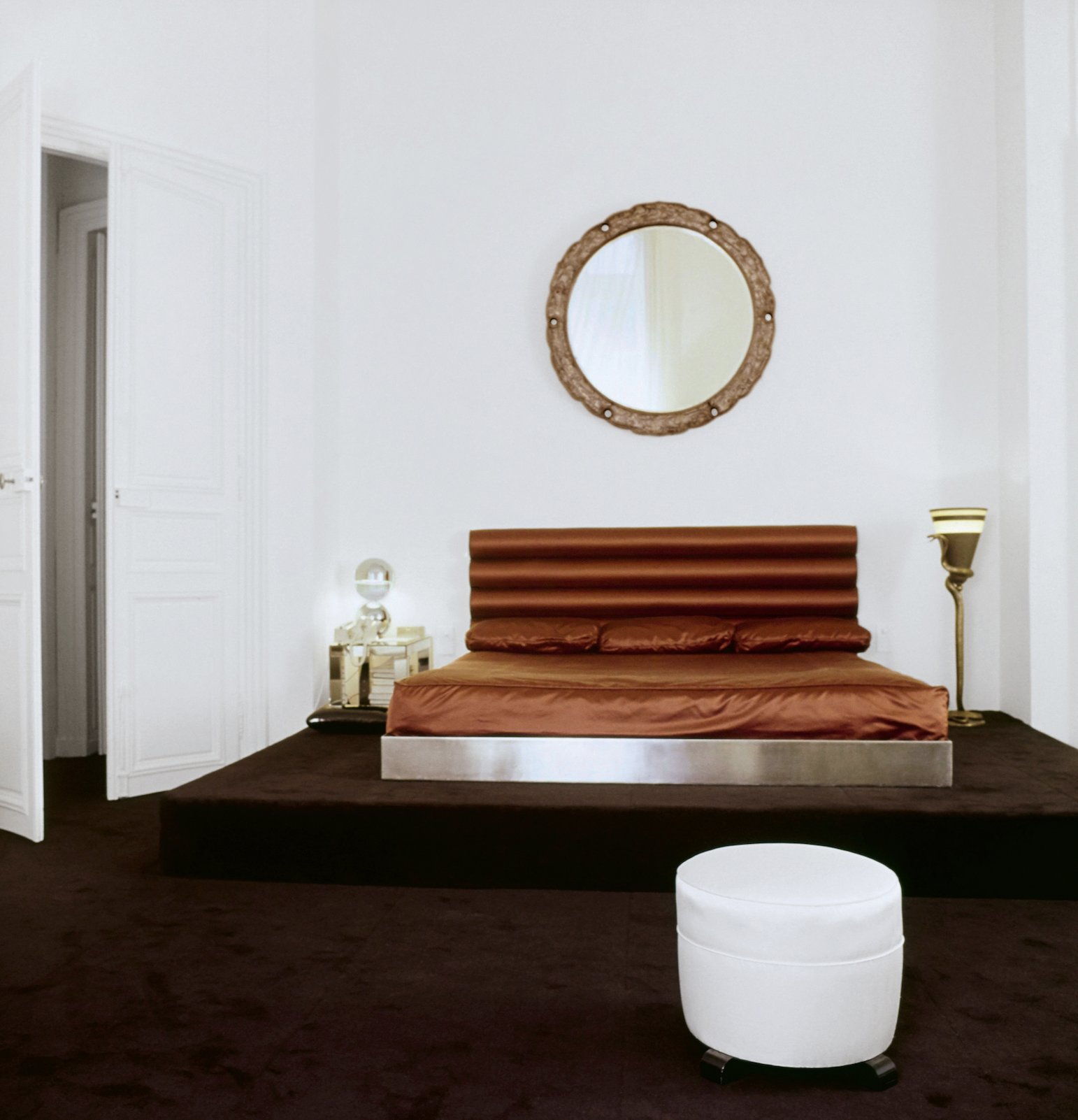
Lagerfeld died in 2019, and the process of dispersing his worldly goods is still ongoing. The Quái Voltaire apartment was sold this year for US$10.8 million (around $16.3 million). Now only the rue de Saint-Peres property remains within the Lagerfeld trust. Purchased after Quái Voltaire to further accommodate more of his books—35,000 were displayed in his studio alone, always stacked horizontally so he could read the titles without straining his neck—and as a place for food preparation as he loathed his primary living space having any trace of cooking smells. Today, the rue de Saint-Peres residence is open to the public as an arts performance space and most fittingly, a library.
You may also like.
By Josh Bozin
24/07/2024
Watch This Space: Mike Nouveau
Meet the game-changing horological influencers blazing a trail across social media—and doing things their own way.
In the thriving world of luxury watches, few people own a space that offers unfiltered digital amplification. And that’s precisely what makes the likes of Brynn Wallner, Teddy Baldassarre, Mike Nouveau and Justin Hast so compelling.
These thought-provoking digital crusaders are now paving the way for the story of watches to be told, and shown, in a new light. Speaking to thousands of followers on the daily—mainly via TikTok, Instagram and YouTube—these progressive commentators represent the new guard of watch pundits. And they’re swaying the opinions, and dollars, of the up-and-coming generations who now represent the target consumer of this booming sector.
—
MIKE NOUVEAU

Can we please see what’s on the wrist? That’s the question that catapulted Mike Nouveau into watch stardom, thanks to his penchant for highlighting incredibly rare timepieces across his TikTok account of more than 400,000 followers. When viewing Nouveau’s attention-grabbing video clips—usually shot in a New York City neighbourhood—it’s not uncommon to find him wrist-rolling some of the world’s rarest timepieces, like the million-dollar Cartier Cheich (a clip he posted in May).
But how did someone without any previous watch experience come to amass such a cult following, and in the process gain access to some of the world’s most coveted timepieces? Nouveau admits had been a collector for many years, but moved didn’t move into horology full-time until 2020, when he swapped his DJing career for one as a vintage watch specialist.
“I probably researched for a year before I even bought my first watch,” says Nouveau, alluding to his Rolex GMT Master “Pepsi” ref. 1675 from 1967, a lionised timepiece in the vintage cosmos. “I would see deals arise that I knew were very good, but they weren’t necessarily watches that I wanted to buy myself. I eventually started buying and selling, flipping just for fun because I knew how to spot a good deal.”
Nouveau claims that before launching his TikTok account in the wake of Covid-19, no one in the watch community knew he existed. “There really wasn’t much watch content, if any, on TikTok before I started posting, especially talking about vintage watches. There’s still not that many voices for vintage watches, period,” says Nouveau. “It just so happens that my audience probably skews younger, and I’d say there are just as many young people interested in vintage watches as there are in modern watches.”
View this post on Instagram
Nouveau recently posted a video to his TikTok account revealing that the average price of a watch purchased by Gen Z is now almost US$11,000 (around $16,500), with 41 percent of them coming into possession of a luxury watch in the past 12 months.
“Do as much independent research as you can [when buying],” he advises. “The more you do, the more informed you are and the less likely you are to make a mistake. And don’t bring modern watch expectations to the vintage world because it’s very different. People say, ‘buy the dealer’, but I don’t do that. I trust myself and myself only.”
—
Read more about the influencers shaking up horology here with Justin Hast, Brynn Wallner and Teddy Baldassare.
You may also like.
By Josh Bozin
24/07/2024
This Pristine 1960 Ferrari 250 Spider Could Fetch $24 Million at Auction
The car wears the same colours and has the same engine it left the factory with.
Some Ferraris are just a little bit more important than others.
Take, for example, the 1960 250 GT SWB California that RM Sotheby’s is auctioning off during this year’s Monterey Car Week. Any example of the open-top beauty would attract interest, but this one just so happens to be the first one that was built.
The 250 is one of the most legendary series of cars in Ferrari history. Between 1952 and 1964, the company released 21 different 250 models—seven for racetracks, 14 for public roads—of which the “Cali Spider” might be the most well regarded, thanks to its potent V-12 and a Pininfarina-penned design that is one of the most beautiful bodies to grace an automobile. The roadster, which was specifically built for the U.S., made its debut in 1957 as a long-wheel-base model (LWB), but it wasn’t until the SWB model debut in 1960 that it became clear how special it was. This example isn’t just the first to roll off the line. It’s the actual car that was used to introduce the world to the model at the 1960 Geneva Motor Show.
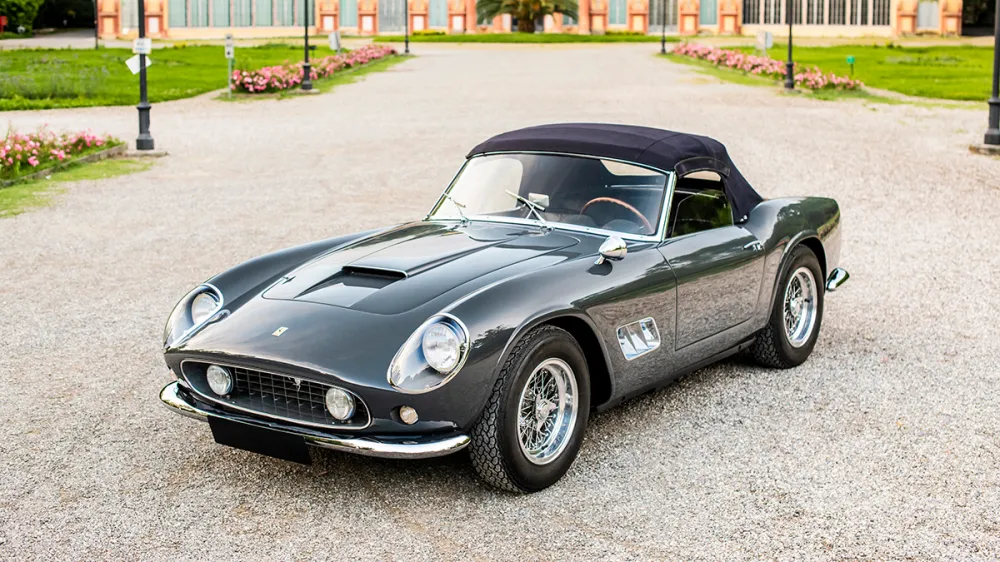
Just 56 examples of the 250 GT SWB California Spider would be built by Scaglietti during the three years it was in production. The first of those, chassis 1795 GT, is finished in a glossy coat of Grigio. The two-door had a red leather interior at Geneva but was returned to the factory and re-outfitted with black leather upholstery before being delivered to its original owner, British race car driver John Gordon Bennet. Six-and-a-half decades later the car looks identical to how it did when it left the factory the second time.
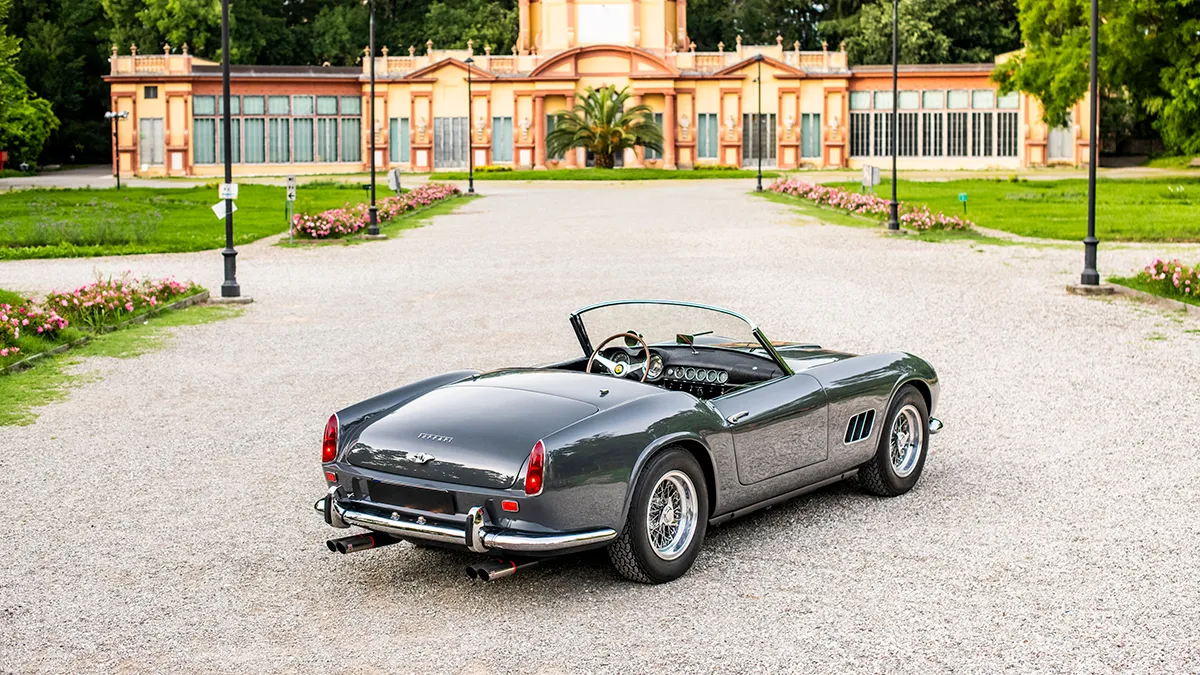
In addition to its original bodywork, the chassis 1795 GT features its original engine, gearbox, and rear axle. That mill is the competition-spec Tipo 168, a 3.0-litre V-12 that makes 196.1 kW. That may not sound like much by today’s standards, but, when you consider that the 250 GT SWB California Spider tips the scales around 952 kilograms, it’s more than enough.
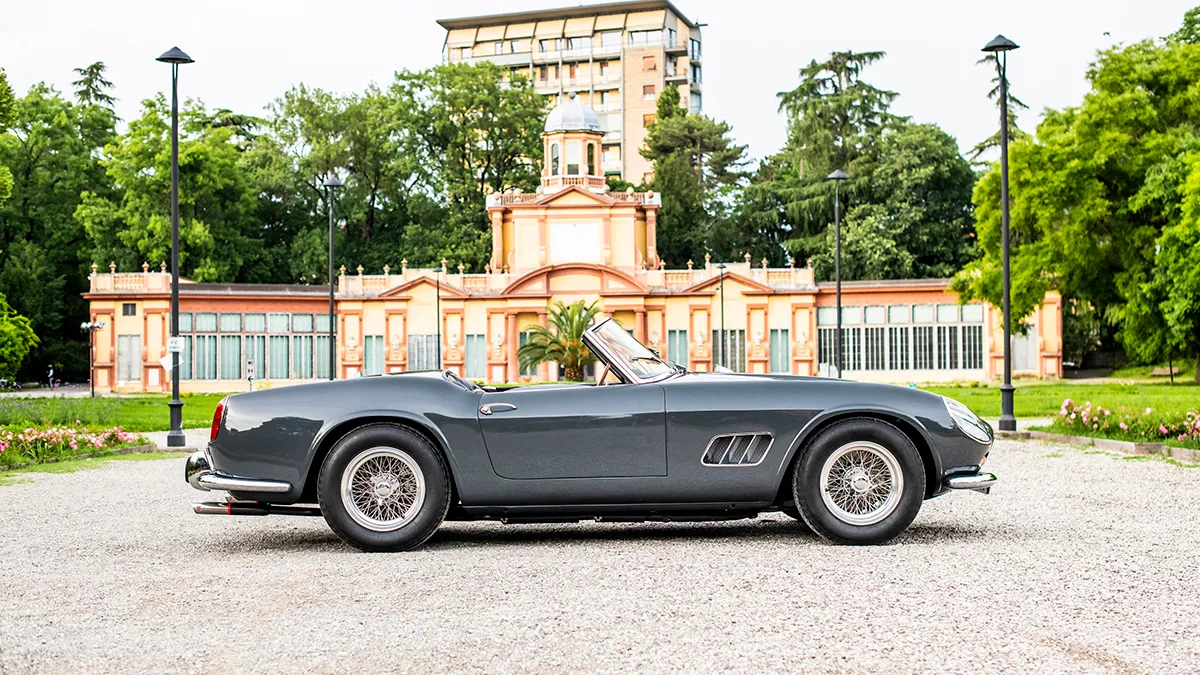
The first 250 GT SWB California Spider is scheduled to go up for bid during RM Sotheby’s annual Monterey Car Week auction, which runs from Thursday, August 15, to Saturday, August 17. Unsurprisingly, the house has quite high hopes for the car. The car carries an estimate of between $24 million and $26 million, which could make it one of the most expensive cars ever sold at auction.
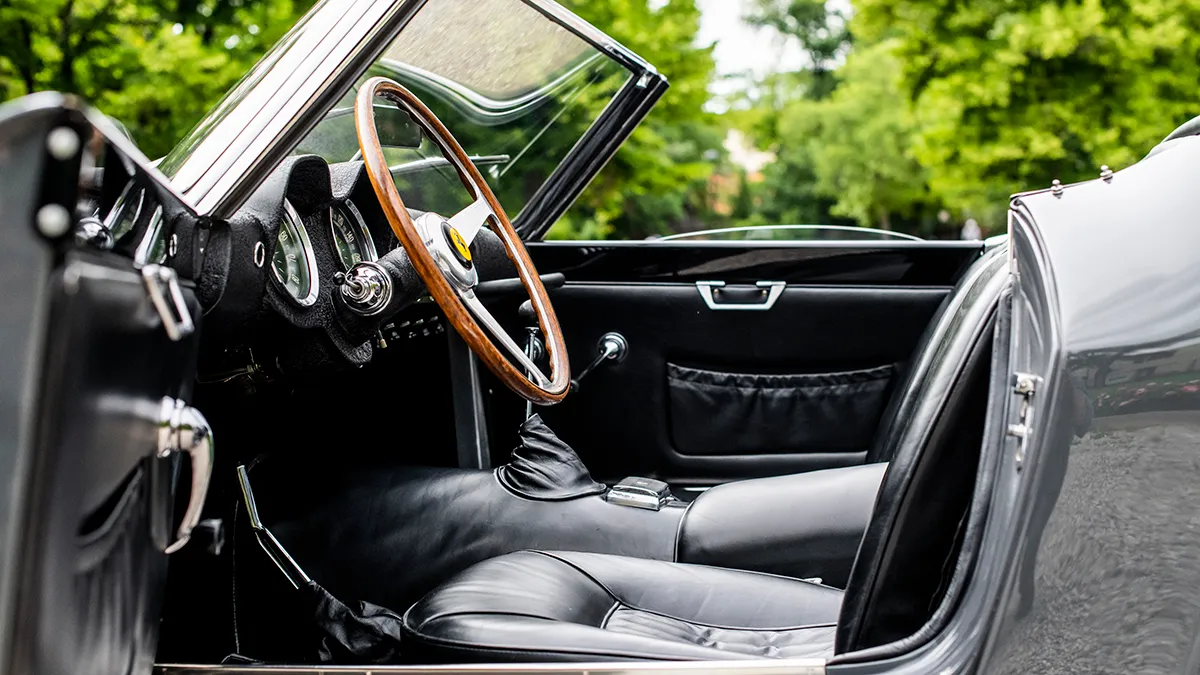
You may also like.
By Josh Bozin
24/07/2024






